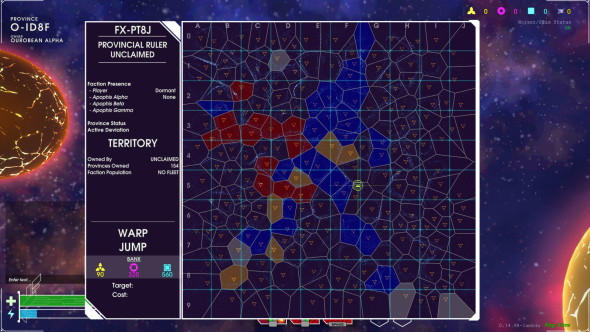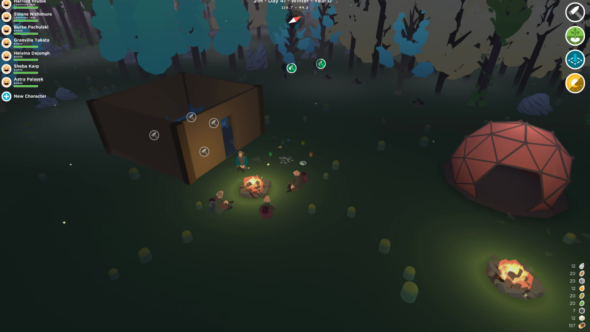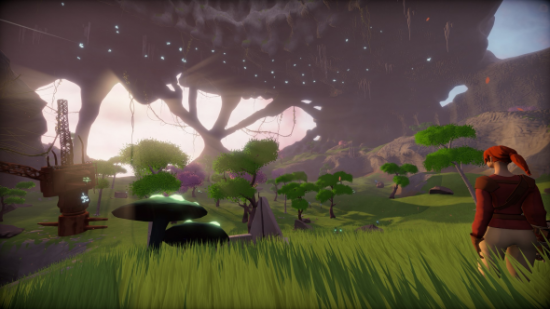Two years ago, game journalist Andrew Groen published Empires of Eve – a book chronicling the dramatic real-life stories of Eve Online’s player-run universe. Right now, it stands alone as a published record of in-game history. But Improbable Chief Creative Officer Bill Roper expects investigative journalism will become a playstyle itself in the MMOs of the future.
Related: introducing SpatialOS and the future of multiplayer.
“For some people, that will be as much of the game as anything – seeing some radical change in the world and then saying, ‘How did that happen?’,” he enthuses. “In some ways, it’s a fantastic visualisation of the way our world actually works.
“Why are there giant heads on Easter Island? We don’t always know how these things happen. Only later do we find out that there are bodies underneath, once we’ve developed the tools to find that out. You’re making suppositions, and that leads to different beliefs and legends. And it all becomes the history of a world.”
Roper is talking about his wildest dreams for SpatialOS, the development platform that connects servers together in the cloud to allow for huge player numbers and deep simulation. Having dedicated the bulk of his career to connected worlds, from World of Warcraft to Champions Online, Roper has become accustomed to the limitations MMOs work around.
“It’s a constant balancing act,” he tells us. “You’re weighing all these elements in your game against each other. You want to have more players in a world, more things for people to interact with, a better physics engine, deeper AI, or a world that doesn’t go away when you walk off.”
By combining servers, SpatialOS enables all of these things to coexist – lifting the roof that developers have been bumping their heads against, and firing the imagination of designers like Roper.
Roper has seen ‘glimpses’ of his dream SpatialOS game in the likes of Eve Online, or World of Warcraft’s accidental plague. A world so persistent and deeply simulated that it becomes a “living game laboratory” where the butterfly effect rules. A place where your decision to plant a tree might change the ecology of the world over the course of years.
Ideas like these might have seemed niche a few years ago. But, today, PC gaming is driven by mass-scale multiplayer in the form of PUBG and Fortnite. And, lest we forget, persistent simulation helped make a phenomenon of Minecraft.

“If you’re playing a PUBG-style game where the map has a persistence of a week, that means your gameplay space is going to evolve over the space of seven days,” Roper says. “If somebody takes down a radio tower, that tower is down from that point on.
“Imagine you’re getting near the end of a match you don’t know you’re going to win. So you hide some stuff for yourself the next match, and when you’re jumping out of the aeroplane you’re trying to land near where you last were.”
It seems likely that the wildest possibilities for SpatialOS have yet to be conceived, though. Over the last decade, the infrastructure required to build and support MMOs has seen teams swell into the hundreds, and design conservatism set in. Improbable’s technology, by contrast, opens up the possibility of offbeat indie cousins to Destiny and Anthem.
“Usually it’s completely unfeasible for anyone bar triple-A,” Worlds Adrift game designer Luke Williams says. “But with 30-odd people we were able to start building something [massively-multiplayer].”

Using SpatialOS, Williams and Bossa Studios were able to build an ambitious physics sandbox where ships float through the skies. And an even smaller team at Spilt Milk Studios are working on Lazarus, or “Asteroids the MMO.”
“Any time you bring a new tool that opens up something to more developers, that influx of amazing ideas is always exciting,” Spilt Milk founder Andrew John Smith says. “That supreme scale is going to naturally suit some genres, and probably birth a couple of new ones.”
Klang, the developers behind the evolving SpatialOS planet simulator Seed, consider this process not just exciting but important.
“We need to have different approaches to games that are trying to encompass large quantities of players inside one community,” Klang co-founder Mundi Vondi says. “To get an understanding of the design issues, we need to be able to experiment and have a lot of people doing all kinds of weird stuff.
“What does become more fun when you add more players to it? I think the people that come up with the best solutions for these larger player communities are going to be far ahead once that wave hits.”

A trio of Icelanders with a history in Eve Online, Klang are making headway with the weird stuff. The studio are working with Harvard Law professor Lawrence Lessig on Seed’s politics – figuring that, as a virtual reflection of the real world, governmental structure will inevitably arise as players begin to self-organise.
In the real world, Lessig has written about and campaigned for electoral reform – even running as a US presidential candidate in the 2016 election. If it seems as if SpatialOS’ new breed of games might at some point begin to blur the line between reality and simulation, well, it can feel that way for the developers too.
“The world that we are doing is super big – we can’t keep track of all the trees growing,” Vondi admits. “It’s only when the player starts chopping at [the image of] a tree that it switches, without them knowing, into an actual tree.
“These are the things that are really sci-fi. It makes you think, it would be so easy to just keep simulating – the deeper you look, the simulation goes on and on. If you’re working on SpatialOS, you really start to get convinced that we’re living in a simulation. If you just look around you, I think that’s the ultimate potential of where this technology can lead.”
This article is part of a series of features sponsored by Improbable. Visit their site for more on games using SpatialOS.
